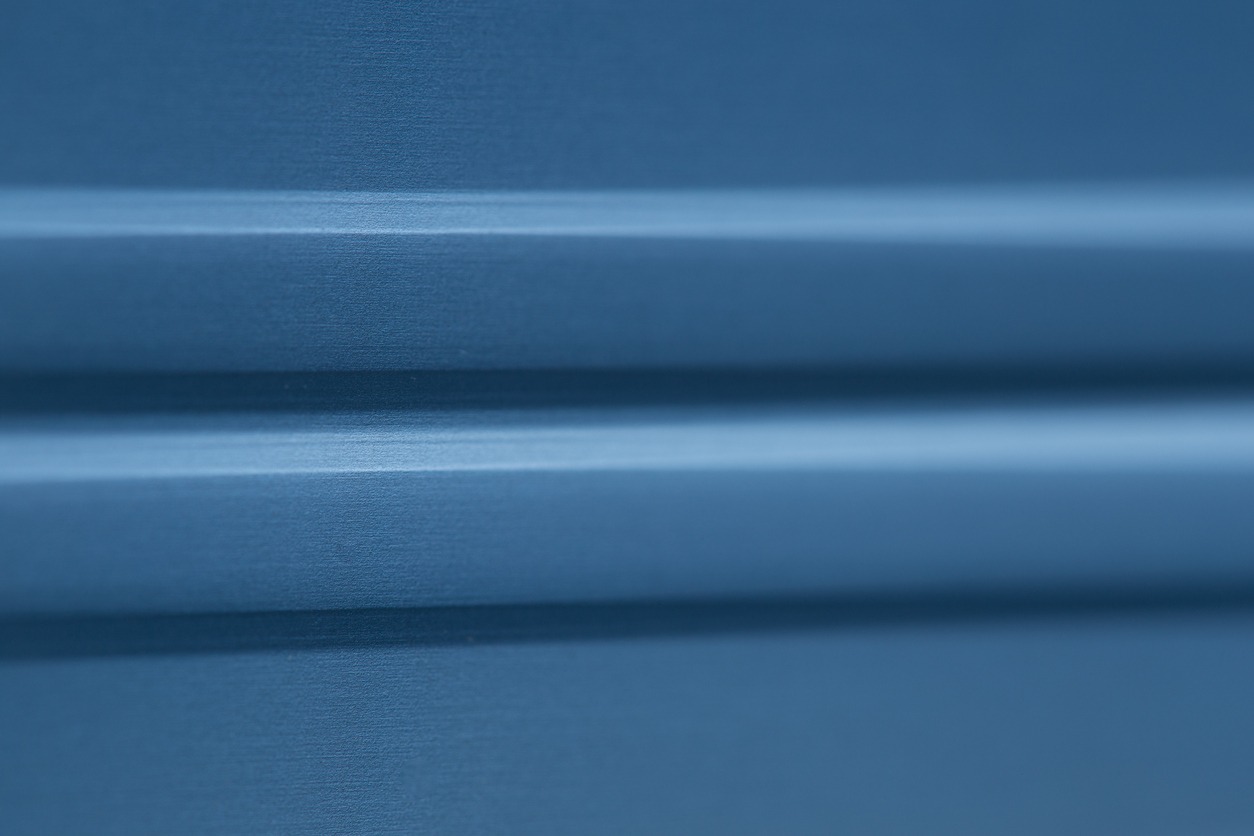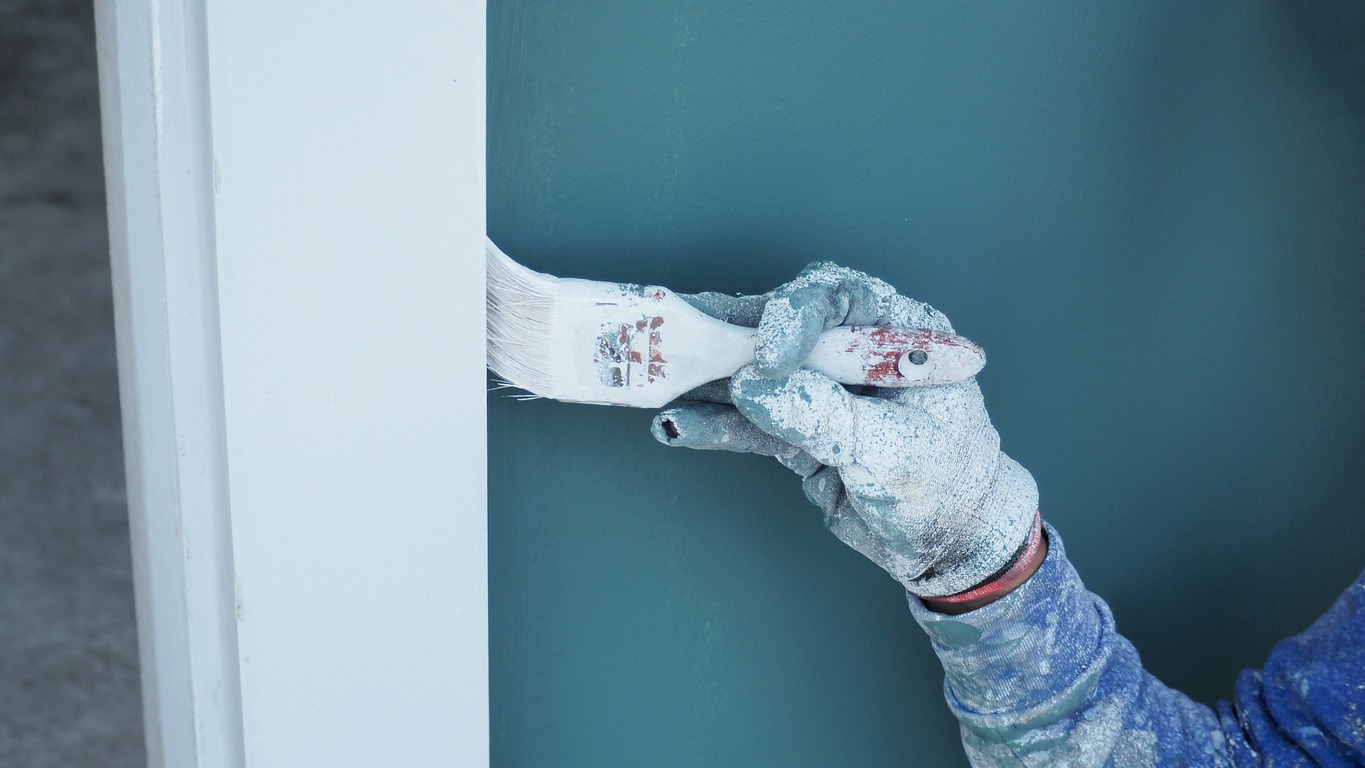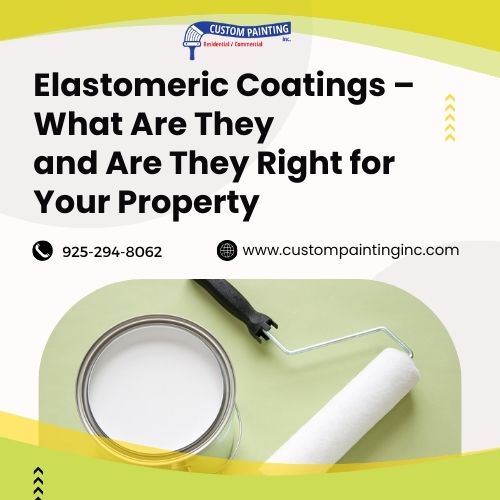If you want a versatile finish that can protect your property and let you enjoy savings on maintenance, elastomeric coatings can be the answer. These coatings use flexible, durable, and water-resistant materials to protect surfaces from environmental damage. Elastomeric coatings, made from elastic polymers, can stretch and return to their original shape without cracking, providing long-lasting protection for buildings and structures.
These protective coatings shield surfaces from weather, UV rays, and pollutants, preventing deterioration and extending lifespan while reducing maintenance costs. In this article, you will learn all about elastomeric coatings – how they work, their benefits, potential drawbacks, and comparison with other coatings. The details will help you decide whether this coating is ideal for your property.
What are elastomeric coatings?
Definition and composition
Elastomeric coatings are flexible, durable coatings used to protect and waterproof surfaces. They are capable of stretching and returning to their original shape without damage.
Definition of elastomers: they are viscoelastic polymers, meaning they exhibit both viscosity and elasticity. They can stretch significantly and recover their original shape, making them ideal for coatings that need to accommodate substrate movement.
Elastomeric coatings’ primary components include elastomeric polymers (such as acrylics, polyurethanes, or silicones), pigments, fillers, and additives for UV resistance, adhesion, and flexibility.
Types of elastomeric coatings
- Acrylic: These coatings are water-based and known for their excellent UV resistance, breathability, and ease of application. They are commonly used for exterior walls and roofs.
- Polyurethane: Polyurethane elastomeric coatings offer superior chemical and abrasion resistance and durability. They are often used in more demanding environments, such as industrial settings.
- Silicone: Silicone elastomeric coatings provide outstanding water resistance, flexibility at extreme temperatures, and long-term durability. They are ideal for roofing applications where extreme weather conditions are a concern.
How do elastomeric coatings work?

Mechanism of action
About their flexibility and elasticity, elastomeric coatings are designed to stretch and return to their original shape without damage. This flexibility allows them to bridge small cracks and accommodate building movement.
As for their waterproofing capabilities, elastomeric coatings create a continuous, seamless barrier that prevents water penetration. It is the most useful for protecting surfaces from moisture damage.
Regarding UV resistance, many elastomeric coatings contain UV-resistant additives that protect the underlying substrate from sun damage, reducing degradation and extending the life of the coating.
Application process
- Surface preparation: Correct surface preparation is crucial for proper adhesion. This involves cleaning the surface to remove dirt, grease, and loose materials and sometimes priming the surface to ensure the coating bonds properly.
- Application techniques:
- Brush: Used for smaller areas or detailed work.
- Roller: Suitable for larger, flat surfaces.
- Spray: Ideal for large areas and complex surfaces, providing a more uniform finish.
- Curing time: Curing times vary depending on the specific product and environmental conditions but generally range from a few hours to several days. Full curing ensures the coating achieves its maximum durability and performance properties.
Benefits of elastomeric coatings
Elastomeric coatings offer several benefits:
- Durability and longevity: These coatings extend the life of surfaces by withstanding harsh conditions and wear.
- Protection against weather elements:
- Water resistance: They create a waterproof barrier that prevents water infiltration.
- UV protection: They block harmful UV rays, preventing sun damage.
- Temperature tolerance: They can expand and contract with temperature changes without cracking.
- Cost-effectiveness over time: Reduced maintenance and longer lifespan make them economical.
- Aesthetic improvements: They provide a smooth, uniform finish that enhances the look of surfaces.
- Range of colors and finishes: Available in various colors and finishes, they can match any design scheme.
- Enhanced curb appeal: The improved appearance of buildings and structures boosts property value and attractiveness.
Potential drawbacks of elastomeric coatings
1. Initial cost: Elastomeric coatings can be more expensive upfront than traditional paint or other coating options.
2. Application Challenges:
- Need for professional application: Proper application often requires professional expertise to ensure the coating performs as intended.
- Time-consuming: The application process can be lengthy, involving multiple coats and extended curing times.
3. Maintenance requirements: While durable, elastomeric coatings still require regular maintenance to inspect for and repair any damages, ensuring long-term effectiveness.
Is elastomeric coating the best for you?
When considering whether elastomeric coating is suitable for your property, here are the key factors to evaluate:
- Type of property (residential, commercial, and industrial):
- Residential: Consider aesthetics and weather protection. Elastomeric coatings can enhance curb appeal and protect against moisture.
- Commercial: Durability and maintenance are crucial. These coatings can extend the lifespan of building facades and reduce maintenance costs.
- Industrial: Resistance to harsh chemicals and environmental stressors is crucial. Elastomeric coatings provide excellent protection in such environments.
- Climate and environmental conditions:
- Temperature extremes: Elastomeric coatings are highly flexible and can expand and contract with temperature changes, making them ideal for regions with significant temperature variations.
- Moisture and humidity: These coatings are waterproof, providing a barrier against rain, snow, and high humidity, which helps prevent water damage and mold growth.
- UV exposure: They offer strong anti-UV radiation resistance, protecting the building surface from sun damage and fading.
- Existing building materials and structure:
- Compatibility: Ensure the coating is compatible with the existing materials (e.g., concrete, stucco, brick, or wood). Elastomeric coatings adhere well to most surfaces, but checking compatibility is essential.
- Condition of substrate: The substrate should be in good condition and free from significant damage or deterioration to ensure proper adhesion and effectiveness of the coating.
- Structural integrity: The building should have no significant structural issues, as elastomeric coatings are not a substitute for structural repairs.
Considering these factors helps determine the suitability and benefits of elastomeric coatings for a particular property, ensuring enhanced protection and longevity.
Comparing elastomeric coatings with other coating options

Traditional paints
- Flexibility: Elastomeric paints are more flexible and can stretch to accommodate building movement, making them ideal for surfaces prone to cracking.
- Durability: Elastomeric paints are generally more durable and weather-resistant than traditional paints.
- Application: Traditional paints require little effort to apply and are often cheaper, but they may not provide the same protection against harsh weather conditions.
Epoxy coatings
- Flexibility: Elastomeric paints are highly flexible, while epoxy coatings are rigid and can crack under movement.
- Use cases: Epoxy coatings are often used for floors and industrial applications due to their hard and durable finish. Elastomeric paints, on the other hand, are used on exterior walls to protect against moisture and temperature changes.
- Chemical resistance: Epoxy coatings offer superior resistance to chemicals and abrasions compared to elastomeric paints.
Silicone coatings
- Water resistance: Both elastomeric and silicone coatings provide excellent water resistance, but silicone coatings are particularly effective in waterproofing applications.
- UV resistance: Silicone coatings generally offer better UV resistance and can maintain their properties in direct sunlight longer than elastomeric paints.
- Elasticity: Elastomeric paints are more elastic and can handle substrate movement better than the less flexible silicone coatings.
Conclusion
Elastomeric coatings offer excellent durability, weather resistance, and flexibility. These factors make them a great choice for protecting and enhancing building surfaces. However, selecting the right product requires careful consideration of your specific needs and conditions.
Remember that elastomeric coatings don’t work in the way conventional paints do. Their application can be time-consuming and challenging. Our team from Custom Painting, Inc. has sufficient training to perform the proper application to ensure these coatings work as intended.
For personalized advice and to ensure optimal results, consult with our professionals, who can provide tailored recommendations based on your unique situation. Call us at 925-294-8062 or complete our contact form for a free consultation and estimate.

